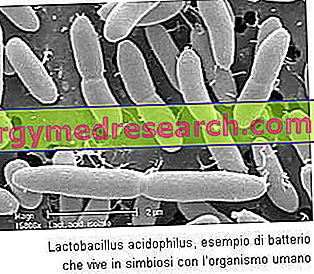Defenses of the Body Each of us has three basic defensive lines against infectious agents: natural barriers : oppose the entry of the infecting agent (skin, mucus, ciliate epithelia, gastric acidity, bile, etc.). Non-antigen-specific innate immune defenses: they provide a rapid local response to the attack of any "invader" (fever, interferon, neutrophils, macrophages, NK cells = natural killer etc
Category infectious diseases
Sixth disease: what is it? The sixth disease is an infectious disease of viral origin, benign, which affects infants aged between six months and two years: it is commonly known as critical exanthema , pseudorosolia or exanthematous fever of three days , and scientifically as exantema subitum or rosolea infantum
Definition Septic (or septicemic) shock is the most feared complication of sepsis; it is characterized by the drastic collapse of arterial pressure and the appearance of tachycardia and a cascade of events of increasing gravity. Specifically, septic shock is a critical state of acute circulatory failure that results from a widespread infection in the blood
Important introduction In common language, the term symbiont refers to a microorganism that shares its life with another, while both derive benefits and mutual benefits from this union; in reality, this definition refers to a very specific type of symbiosis, defined mutualistic. Metaphorically speaking, the popular expression "living in symbiosis", entered into the common language, expresses the strong bond that unites two people: clearly, in jargon, the "symbiosis" identifies a hyperbole, an exaggeration in the context of a description of reality through phrases that amplif
Premise In the large group of streptococci, beta haemolytic certainly plays a prestigious role in terms of pathogenicity and virulence. Before proceeding with the precise treatment of this bacterium, let's take a step back, briefly recalling how streptococci are classified. The classification of streptococcal bacteria is based on two important criteria: Hemolytic capacity → hemolytic alpha / beta / gamma streptococci Antigenic structure as a function of the polysaccharide antigen C of cell wall: Lancefield classification → identification of streptococci distinct from the letters of the alph
Introduction Group B hemolytic streptococcus (or SBEGB) is involved in severe systemic and focal infections in the newborn, such as meningitis and pneumonia. Just like group A beta-hemolytic streptococcus, the protagonist of this article is also a component of the human bacterial flora. However, in favorable conditions, group B beta haemolytic streptococcus turns from commensal to opportunistic pathogen, triggering a host of serious infections in the host
What is that Streptococcus agalactiae - or, more correctly, Streptococcus agalactiae - is a Gram-positive bacterium, part of the human microbiota. In fact, streptococcus agalactiae is a harmless colonizer commonly found in the gastrointestinal and urogenital areas. However, in certain situations, the microorganism in question can transform itself from a simple and harmless diner to an opportunistic pathogen, capable of giving rise to infections
Generality Herpetic stomatitis is an inflammatory pathology of viral origin that involves the oral cavity. The person responsible for the onset of herpetic stomatitis is the same virus responsible for herpes labialis, or Herpes simplex . Herpetic stomatitis is a disorder that can occur in children and adults, indifferently affecting both male and female individuals
Streptococci Very common in nature, streptococci represent a heterogeneous group of spherical, Gram-positive bacteria; some of these, together with other microorganisms, normally inhabit the mucous membranes of the organism (above all oral, pharyngeal, intestinal and vaginal). However, not all streptococci are commensal bacteria: some species are in fact endowed with a remarkable pathogenic potential (eg S
Scroll down the page to read the TBE summary table TBE: definition Acronym of Tick-Borne Encephalitis, a meningoencephalitis transmitted by ticks infected by a virus belonging to the genus Flavivirus TBE: year of description of symptoms 1930: very first description of symptoms (Russia) 1994: detailed description of the illness (Belluno) TBE: spread of the disease TBE: a widespread disease in Europe (Estonia, Switzerland, Austria, Germany and the former USSR) 1979, Austria: 677 TBE cases were diagnosed 1994, Germany: 289 affected patients were observed 2002: most problematic year for Italy, in w
Definition of incubation time The "incubation period" is defined as the interval between the invasion of the body by a microorganism - be it a bacterium, a virus or a fungus - and the manifestation of the first symptom of the disease that derives from it. In disease vectors (eg flies, mosquitoes, ticks, etc











